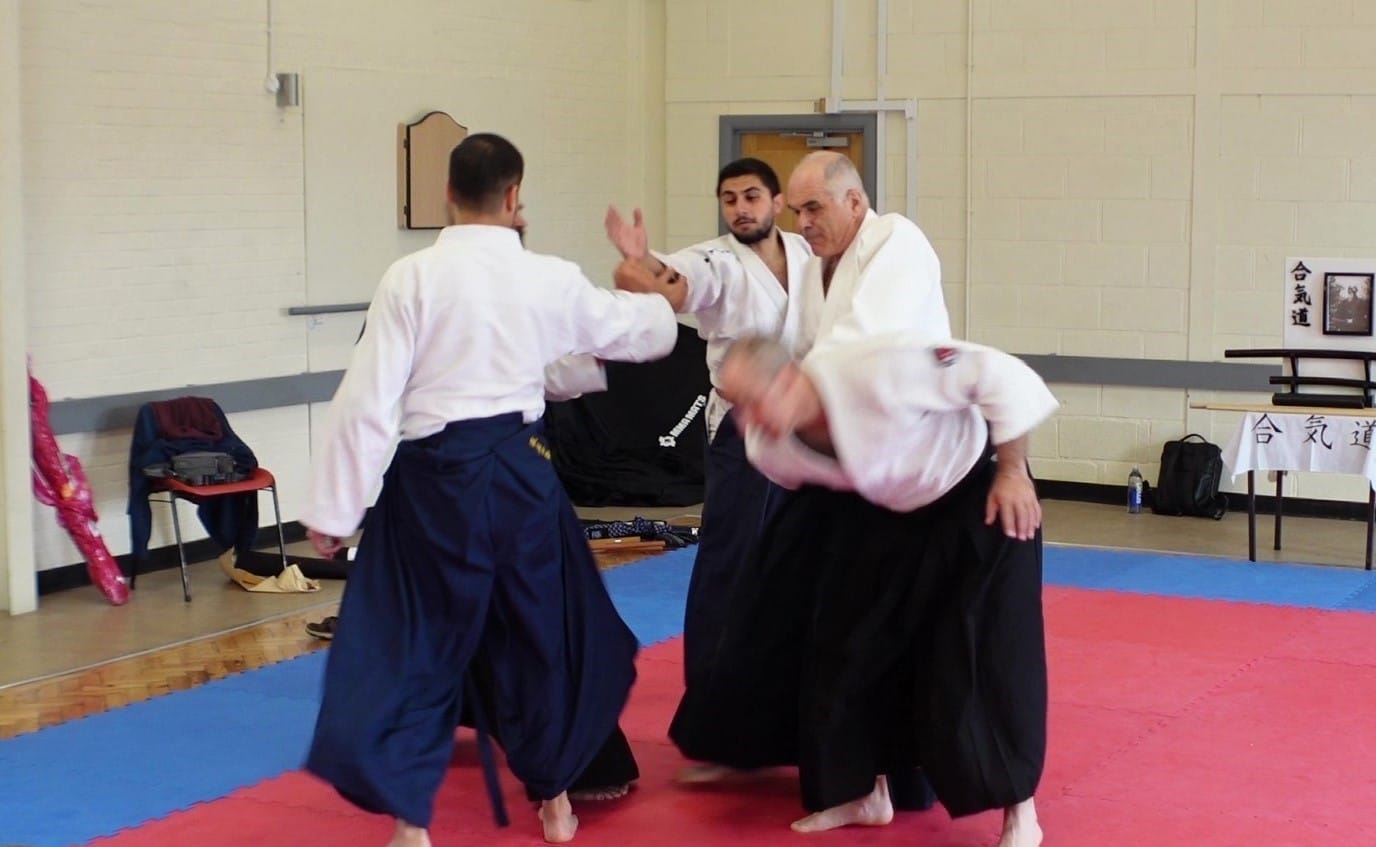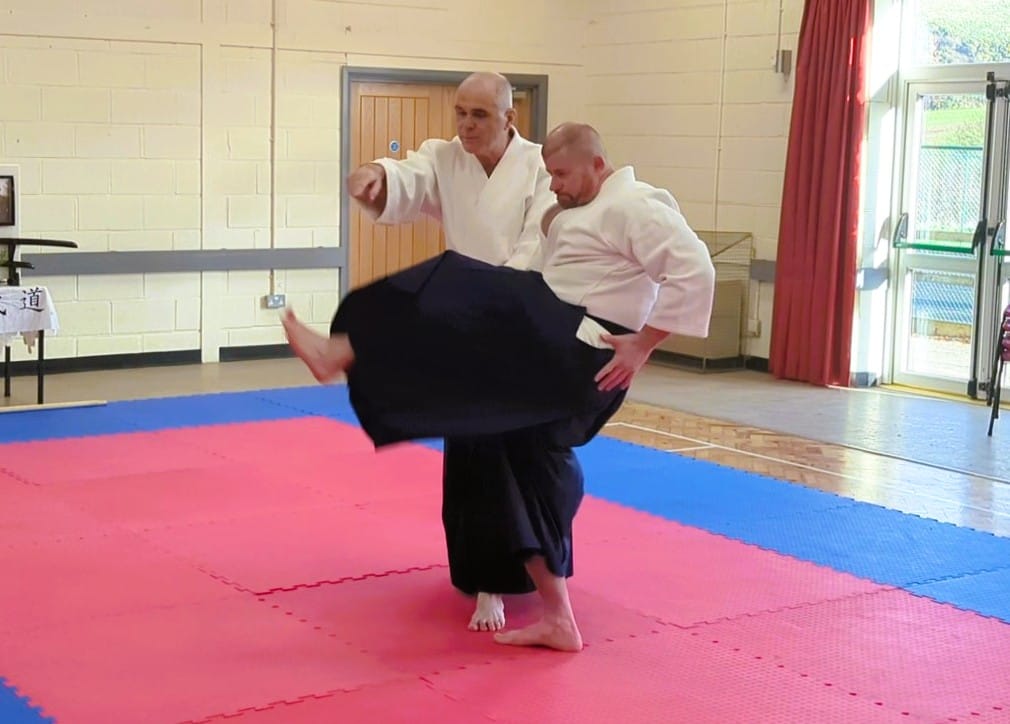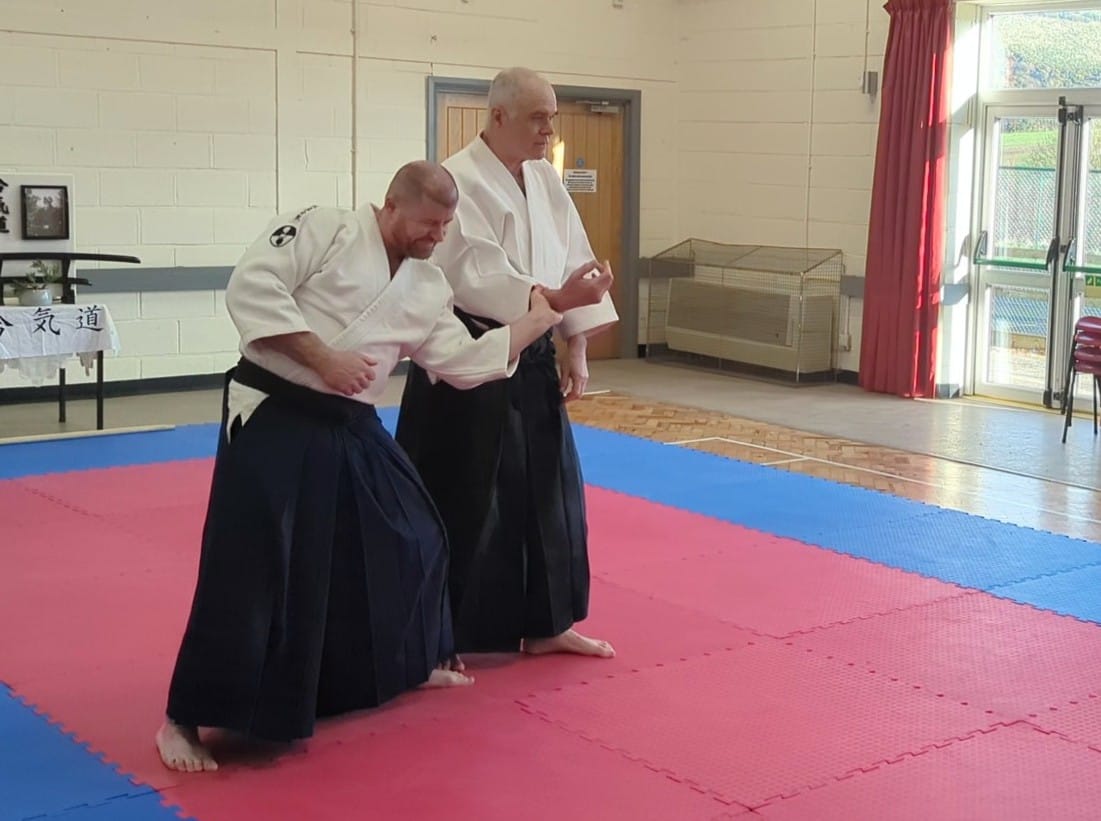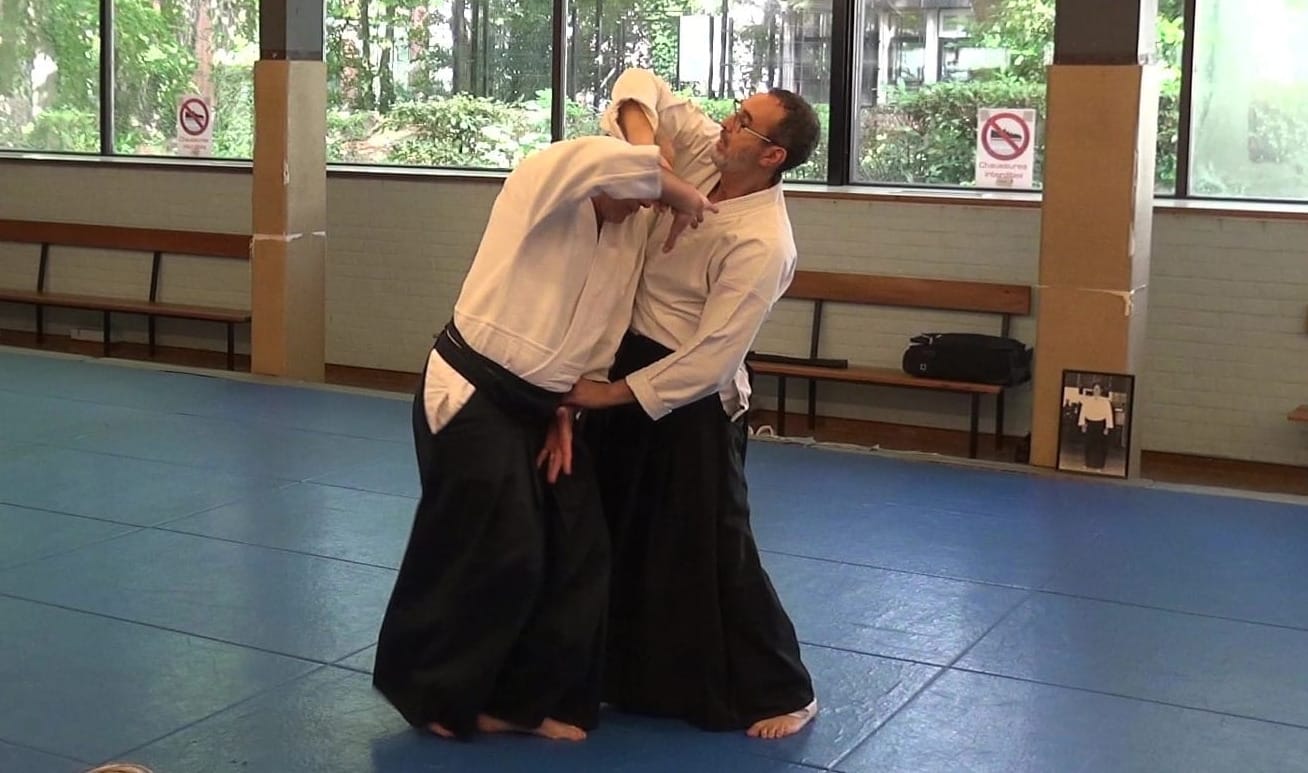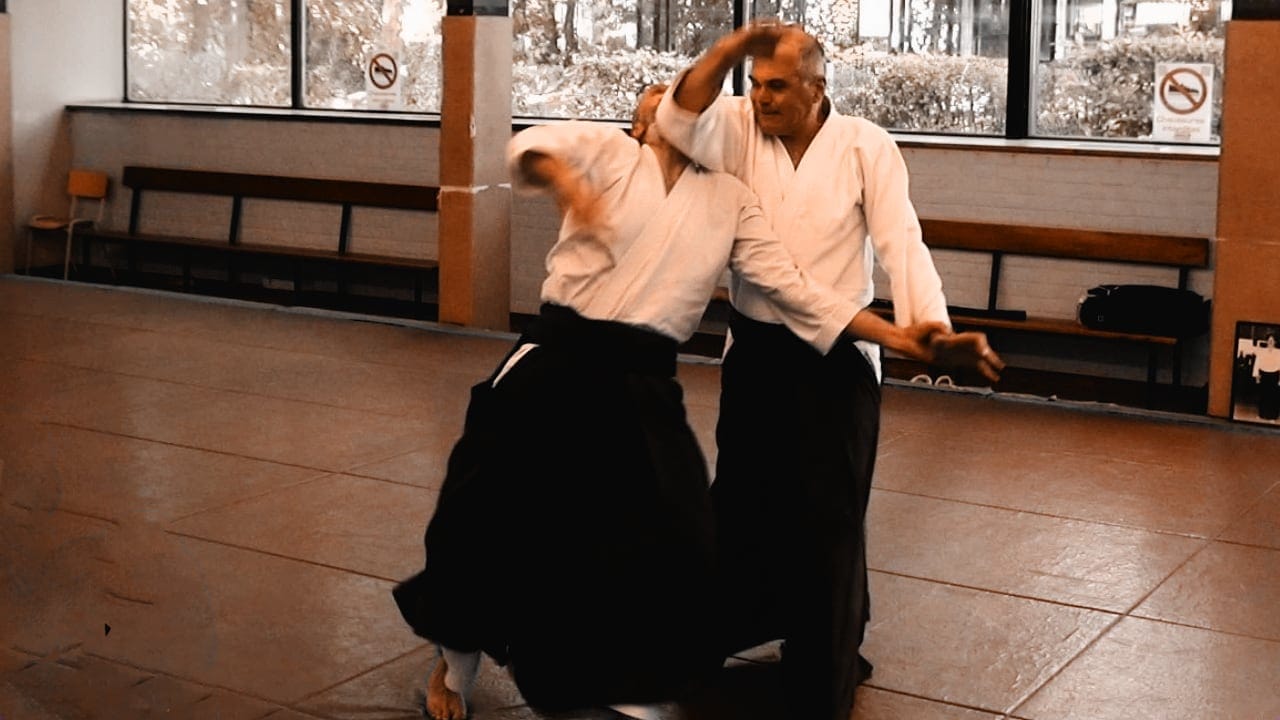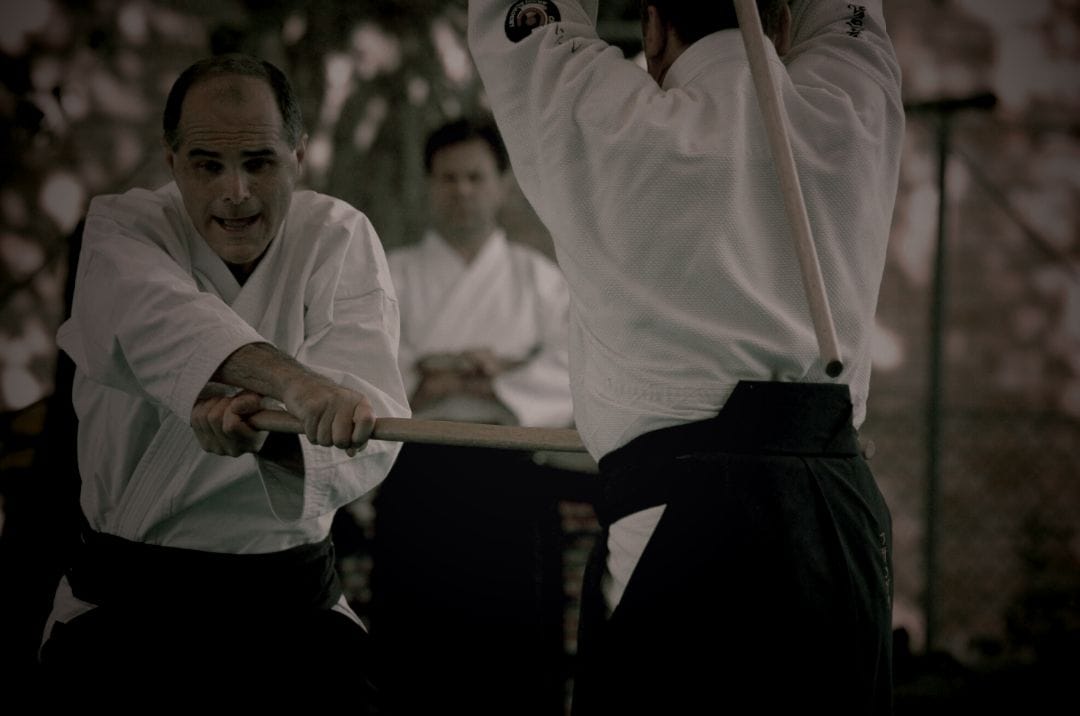There is a rather curious book called Mission de l'Inde, written by Alexandre Saint Yves d'Alveydre at the end of the 19th century, which was destroyed by the author when it came off the press. Is there such a thing as a tai no henka mission? I ask the question, with all due reserve, but I ask it all the same.
Because tai no henka is not a technique, and yet there is no Aikido technique in which this "movement" is not present. Tai no henka is the substratum, the support for the reality of Aikido, which could not exist without it. Tai no henka is therefore a fundamental condition of being as far as the Aikido technique is concerned. And it is a certain role to be a condition of being. There is of course a step to be taken to move from the role to the mission, but it is not forbidden to look in this direction.
The video clearly shows how tai no henka structures the ikkyo ura technique, for example:
Placing four opponents around tori obviously allows you to check what is possible and what is impossible from a martial point of view, but this is only one aspect of things, superficial if you like in the sense that it is only what you see at first sight. These four opponents are like a guide; they represent the four cardinal points in relation to which certain laws of orientation emerge, depending on circumstances.
In other words, the demands that result from martial practice lead us to a search that goes beyond the merely martial dimension. Miyamoto Musashi was Japan's greatest fencer - he was also a painter - and it is for his calligraphic work that my friend and former teacher Pascal Krieger, Grand Master of Shindo Muso-ryu jodo, will probably go down in history. All is in all and everywhere, you just have to unroll things in the right order to put them in relation to each other, and in so doing you raise your awareness of the world and of your place in it.
It was on a cold February day in 1986 in Iwama - it had snowed that very morning - that I began my practice with Morihiro Saito, with shomen uchi ikkyo in fact. When he saw me perform, Master Saito stopped the class. Until then, I'd learnt to respond with ikkyo to an opponent who attacked me with shomen, a simplistic and dual conception of self-defence Aikido. He explained to me and to the whole class that the expression shomen uchi ikkyo means that tori does shomen and does ikkyo, and that it is only on this condition that ikkyo is possible. For me, this was the beginning of a questioning of everything I had learnt in Aikido over the previous ten years.

